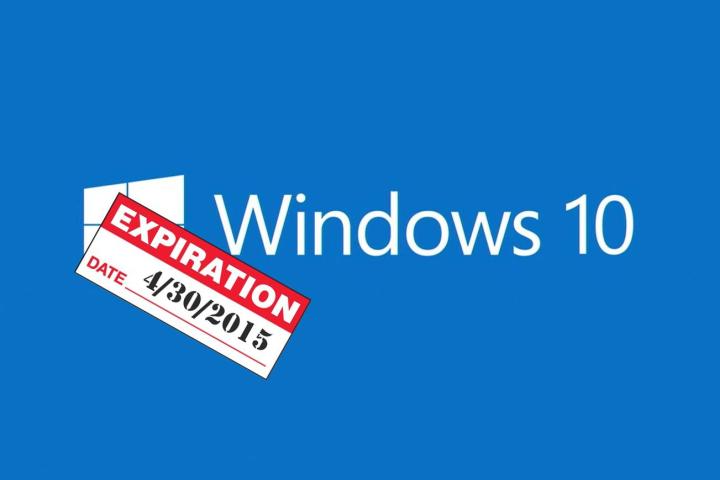
Older versions of Windows have similar features, where unlicensed or enterprise versions of the operating system would work for a while, and then restart every two hours to prevent you from getting anything done and seriously annoy you. This is a step in a different direction for the software giant though, one that imposes the most recent version on users, along with helping to curb piracy by preventing unlicensed versions from working after a few months.
Even if you’re still a few back on the Windows 10 Tech Preview builds, no need to worry quite yet. Builds 9841, 9860, and 9879 have been issuing expiration warnings since April 2. If you ignored those warnings, your license would have expired on the 15th of April, and is already restarting every three hours. On April 30th, Windows will shut down for good, and you’ll have to re-install from a new ISO or Windows disk in order to continue using your computer. Newer builds don’t expire until October 1st, and will stop booting entirely two weeks later on October 15th.
They haven’t said it explicitly, but this is likely how the full release version of Windows 10 will operate as well. Users that upgrade from unlicensed versions of Windows 7, 8, and 8.1 will receive a copy of Windows 10 that is unlicensed. Because it’s unlicensed, the users won’t be able to use Windows Update, and eventually their installation will expire, leaving them with no choice but to re-install completely.
It’s not a foolproof piracy prevention method, but it is a good way to keep older, more vulnerable versions of Windows off of the streets.
Editors' Recommendations
- Scores of people are downgrading back to Windows 10
- Microsoft finally kills this legacy Windows app — for good this time
- The next big Windows 11 update has a new hardware requirement
- Surface Pro 10: all the major changes rumored for the new model
- The most common Windows 11 problems and how to fix them


